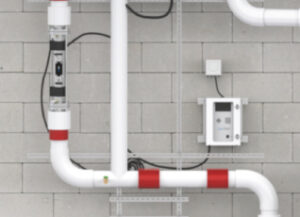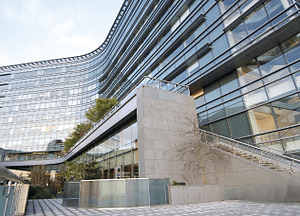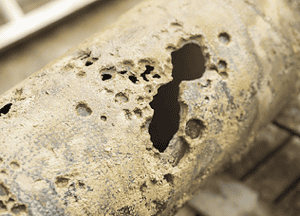Hospital water distribution systems can experience contamination that is not accounted for by the water treatment system provided by the city, so extra precautions must be taken in the healthcare industry to prevent an outbreak of waterborne bacteria and pathogens.
These dangerous bacterial microorganisms include Legionella, Mycobacteria, Pseudomonas, and Klebsiella. They pose a severe threat to the safety of medical facilities and can contribute to the unnecessary spread of disease in the form of hospital-acquired infections (HAIs).
What does bacterial contamination mean for healthcare?
According to the CDC, exposure to Legionella in a healthcare setting, such as hospitals and nursing homes, can be especially severe. Legionella can ubiquitously proliferate in water facilities, especially hot-water systems, contaminating all equipment that uses water.
Legionnaires’ disease, obtained from inhaling aerosolized water infected with Legionella bacteria, is a prime example of a preventable hospital-acquired infection (HAI). Legionella in a healthcare setting would attack physically vulnerable individuals who already suffer from an underlying illness or a weakened immune system.
Silver: the gold standard solution
Healthcare and infection control professionals can preventatively address and reduce the risk of Legionella propagation in their facility by adopting a copper-silver ionization system. This system has been appraised as the gold standard and the most clinically effective prevention and remediation solution for Legionella and other waterborne pathogens.
How does copper-silver ionization work?
Scientists are now adding a silver coating to antibiotics because of its ability to maximize bacterial eradication. The subcellular structure of bacteria includes a wall that makes some bacteria impenetrable, aiding their survival against antibiotics. However, scientists have proven that adding a silver coating to antibiotics maximizes their eradication power, thus yielding a more potent antiseptic. This is due to silver nanoparticles’ antimicrobial properties, which are enhanced by an electric field.
LiquiTech’s solution
We disinfect water systems through copper-silver ionization, which penetrates through the wall of the bacteria, irreversibly damaging its key enzyme and inactivating all traces of the bacteria. This is achieved by applying an electric current across silver and copper-coated electrodes into the bacterial culture to produce nanoparticles that enhance antibiotic action at the anode. Systemically introducing these disinfectant ions in a facility water system, such as the plumbing infrastructure, inactivates Legionella and other harmful waterborne pathogens deeply embedded in the biofilm, thereby improving water quality.
This method is non-corrosive and does not damage the distribution system. Comparatively, this method requires much less chemical use and maintenance than chlorine disinfection, which requires extensive dosage measurements. Copper-silver ionization also better protects the lids and pumps than ozone disinfection, which imposes a high voltage and requires comprehensive transportation and storage efforts. Moreover, unlike the other methods, the efficacy of copper-silver ionization is not dependent on water temperature, making it effective throughout an entire water system. Copper-silver ionization does not involve any disinfection byproducts. It has a longer-lasting local affectivity than most other disinfectants because it remains in the water for an extended period.
Adopt a zero-tolerance policy for Legionella and other waterborne bacteria, and protect your patients, employees, and facility by preventing bacterial outbreaks in your facility water system. Be proactive about prevention by letting LiquiTech help you create a safe, secure, and clean environment accommodating your unique needs.


